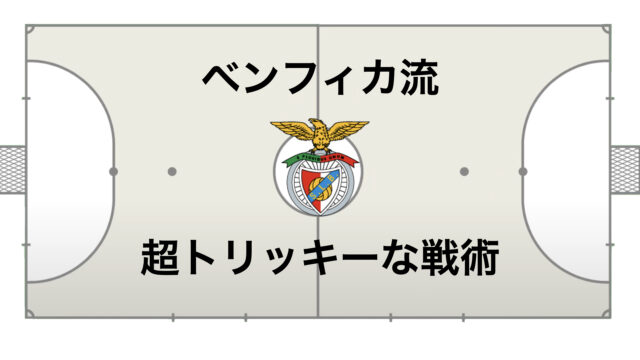In recent years, beginning with Europe and worldwide, teams have been involving the Goleiro as the fifth FP in attack.
This tactic is one that teams—needing to face superior opponents with group tactics due to low individual skill levels—should definitely have.
Premise
Abilities Required from the Team
- Fundamental skills for stopping and kicking
- Goalkeeper’s foot skills (passing, trapping, shooting)
- Pivo’s hold-up ability
- Mental strength (the ability to make calm decisions even when the goal is empty)
Advantages
- Always able to create numerical superiority
- If you can avoid the opponent’s press, it is easier to establish numerical superiority in the opponent’s half and link directly to the goal
- Allows penetration into the opponent’s half with minimal exertion (ideal for teams with fewer substitutions)
- If the opponent lacks defensive guidelines, it can create confusion → breakdown of the defensive organization
Disadvantages
- Leaves the goal exposed, increasing the risk of conceding
- If the opponent withdraws, you cannot utilize the space that could have been exploited
- If the opponent has defensive guidelines, the tactic loses effectiveness → you may be trapped
Initial Formation
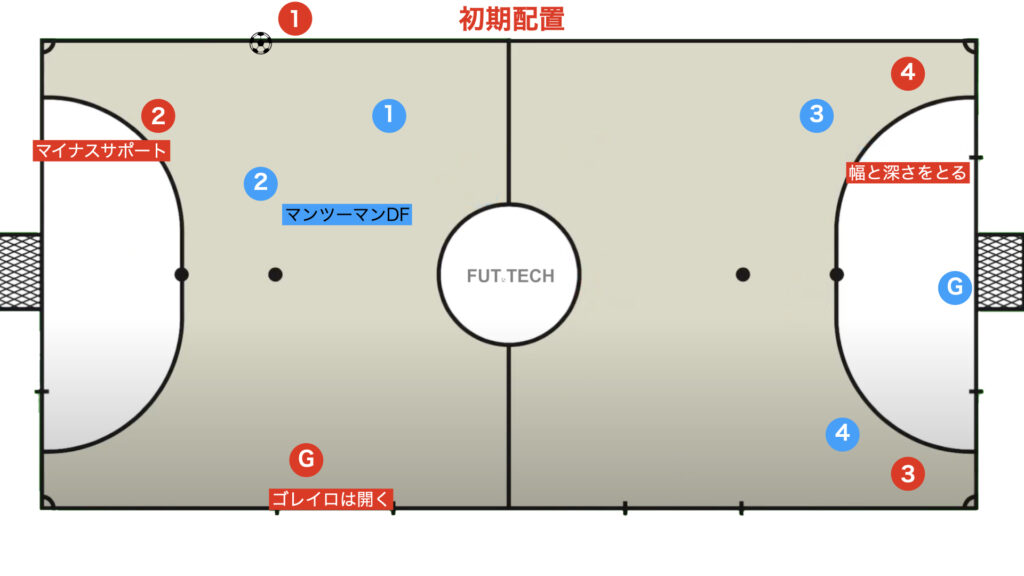
Quickly establishing the initial formation is one of the keys to the success of this tactic.
- Two Pivos position near the corners, providing width and depth
- The Goleiro opens up to provide width
- Fixo offers minus support to the kicker
First, we will explain how to attack when the opponent employs a man-to-man defence.
(We will discuss zone defence at the end.)
First, Target the Pivo
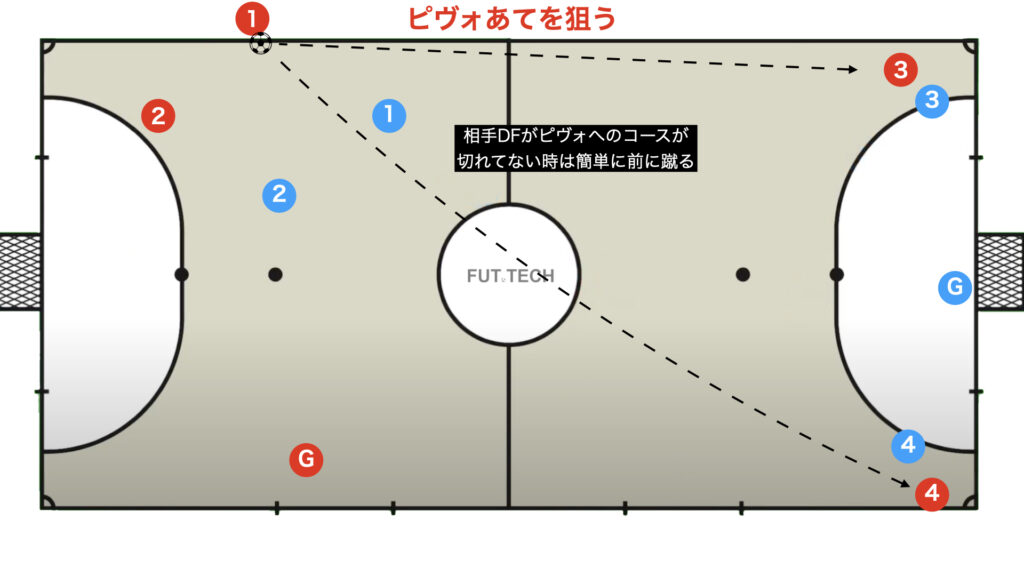
It is important not to be fixated on utilizing the Goleiro unnecessarily; rather, if there is an open passing lane, simply playing a pass to the Pivo is key to advancing.
When Marking on the Pivo is Tight: Indirect Block
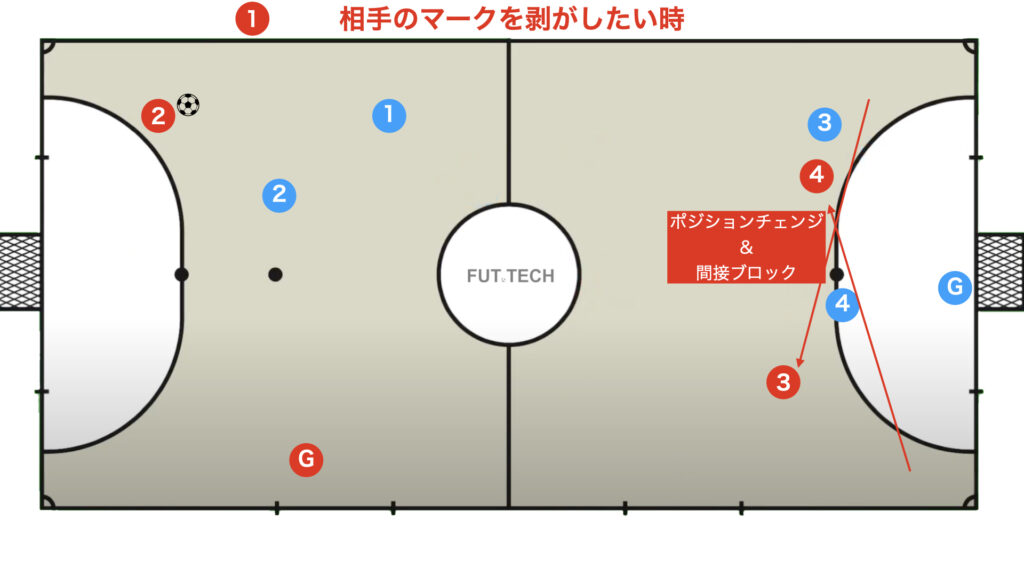
If the Pivo stops to receive the ball, there is a very high possibility that the opposing Fixo will step in and intercept it.
In such cases, the Pivo should move fluidly, performing positional changes or indirect blocks to shake off the opponent’s marking and receive the ball in space.
When the Opponent Plays Man-to-Man Defence
An Orthodox Opening
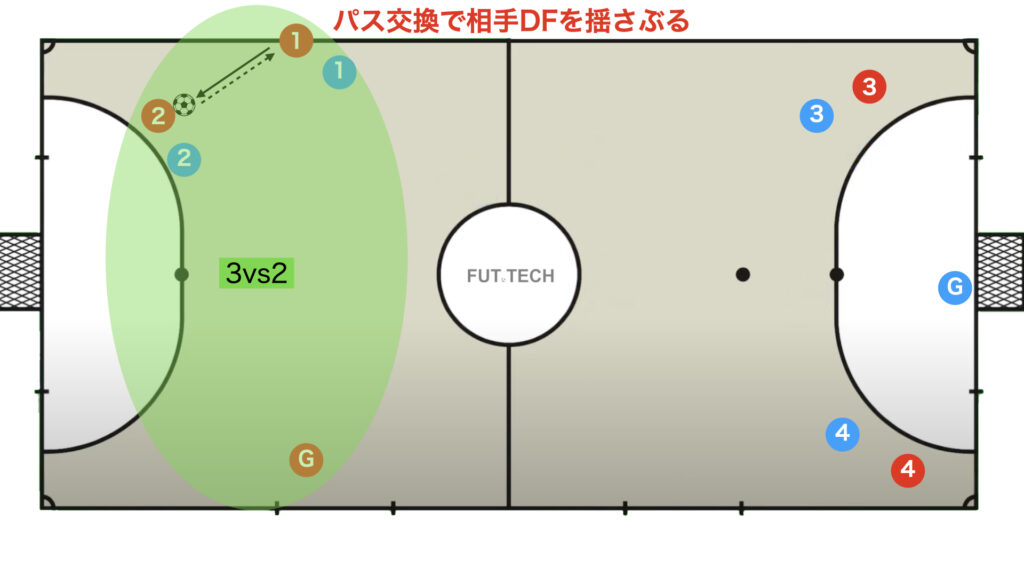
If an immediate pass to the Pivo or a switch to the opposite side (Goleiro) is not achievable, exchange passes with the minus support (red number 2) to unsettle the opposing defence.
Switching to the Opposite Side (Goleiro)
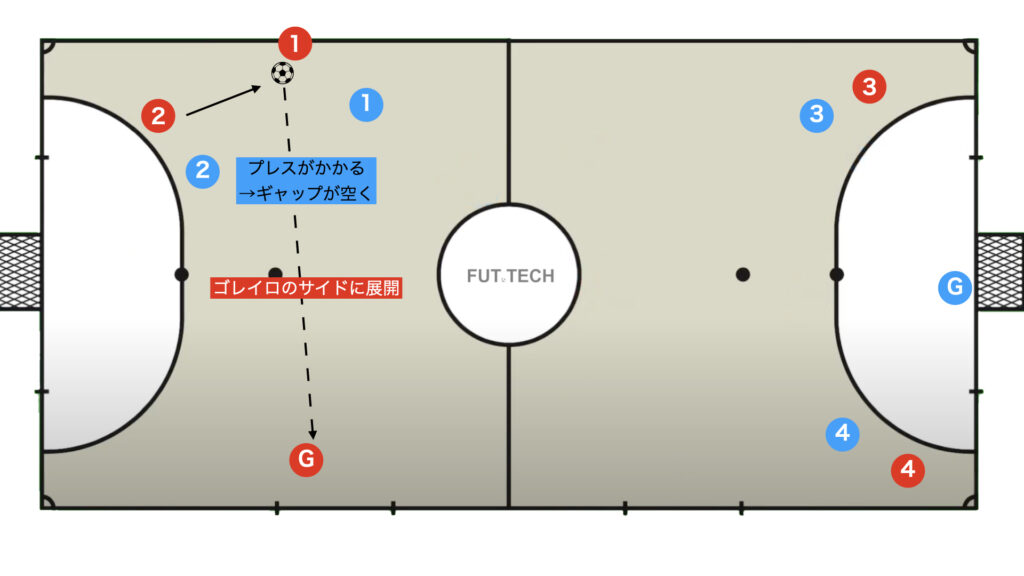
When the press on the minus support (blue number 2’s press) is intense, gaps tend to open up—so target the gap.
At this point, if blue number 1 attempts to block the gap, take the following measures:
- Use Ala Corta to directly switch to the opposite side (by moving close to the ball)
- Attempt a vertical breakthrough with Contrapie (or alternatively to the Pivo)
- Return the pass to the minus support once again

If there is no press from blue number 2 to red number 2, you can directly switch to the Goleiro.
When the Goleiro is Jumped On
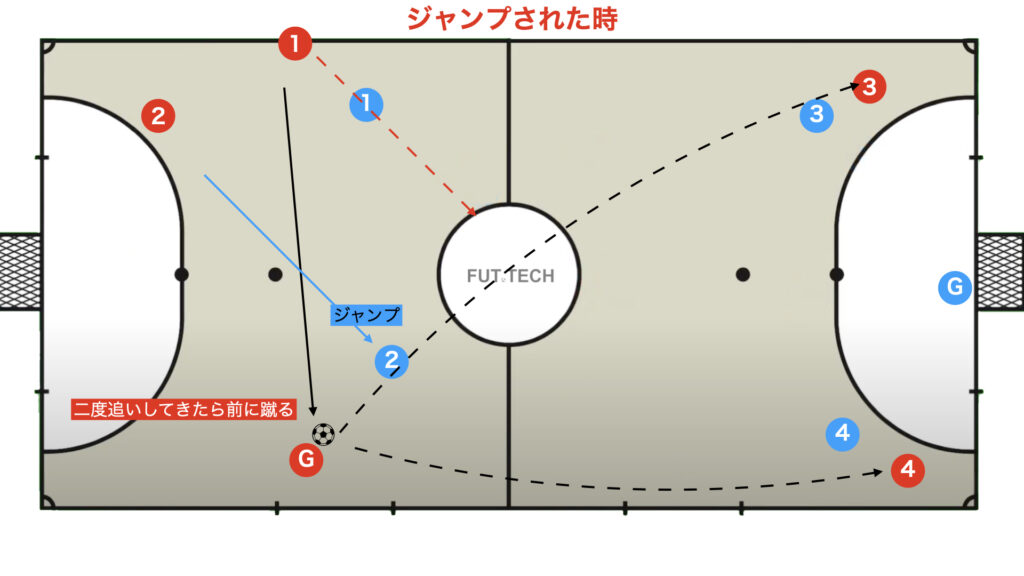
If the pass is weak or off-target and the opposing DF jumps (double chase), do not force the play forward—instead, kick forward (to the Pivo).
If Not Jumped On
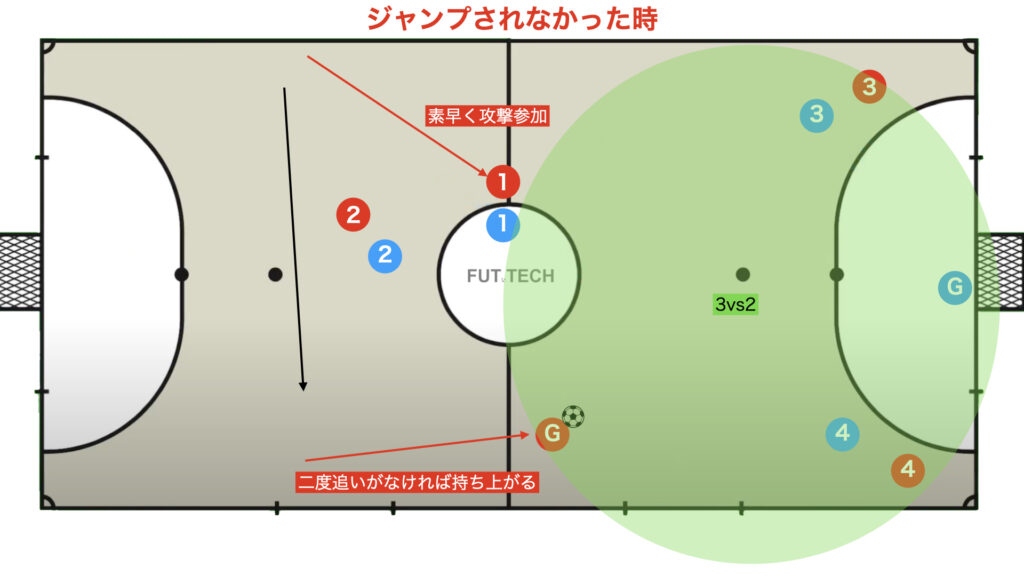
If not jumped on, continue advancing into the opponent’s half to create a 3vs2 numerical superiority.
If the Opponent Isn’t Lured Out, Proceed to Shoot
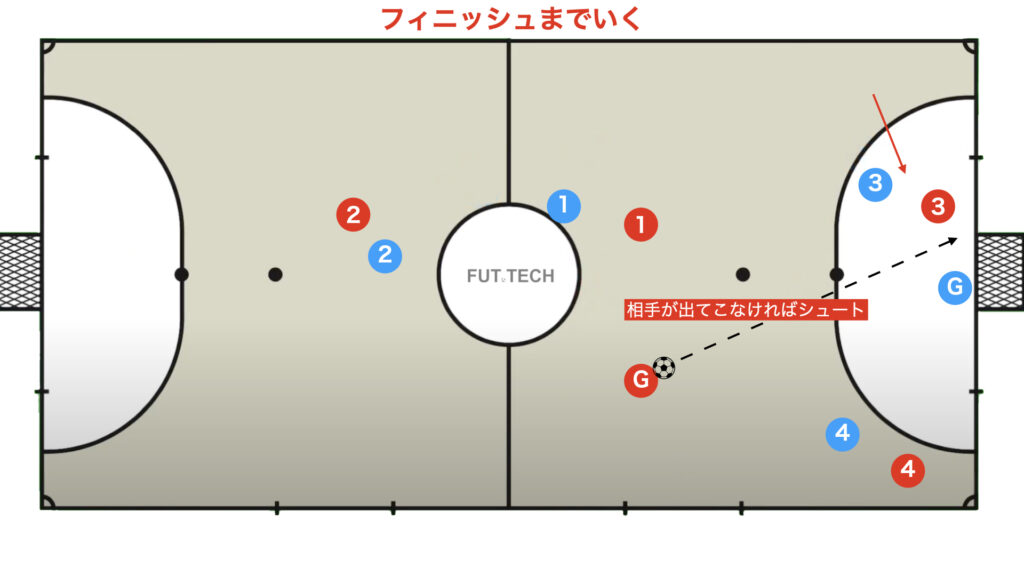
If the opponent does not come out, aim for a shot.
If the Goleiro lacks shooting skills and takes a low-probability shot, the risk of conceding a counterattack goal increases. In such cases, it is desirable to establish a team consensus to aim for a goal by delivering a pass with a shooting threat to the Segundo.
If the Opponent is Lured Out, Choose to Pass
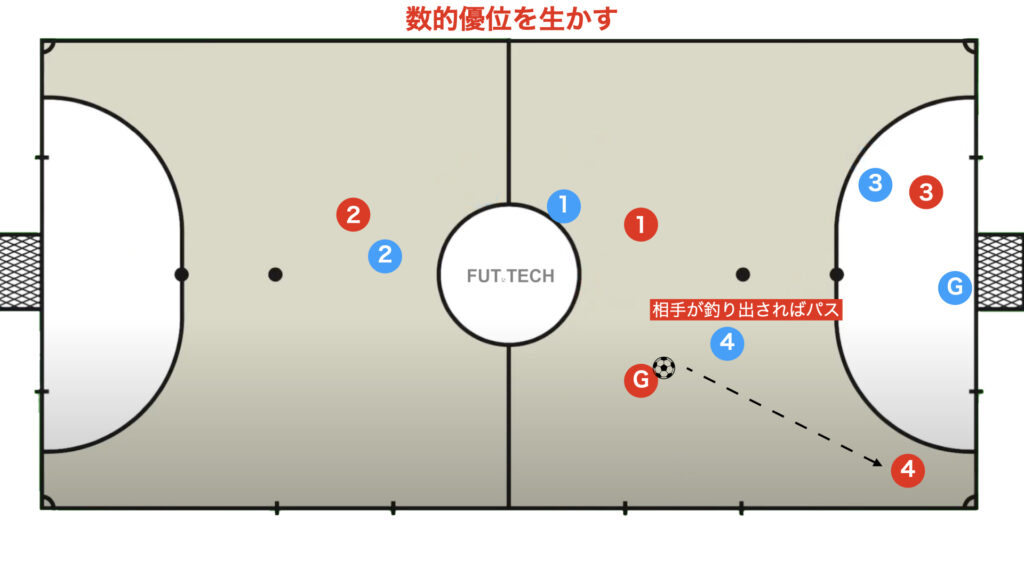
If the opponent is lured out, a gap will inevitably appear somewhere—so make use of the open player or space.
When the Opponent Defends with a Zone
While many teams defend with a man-to-man approach against this tactic, sometimes teams adopt a zonal defence. Here, we present countermeasures for that scenario.
One Player Dropping Between the Lines (Line Collapse)
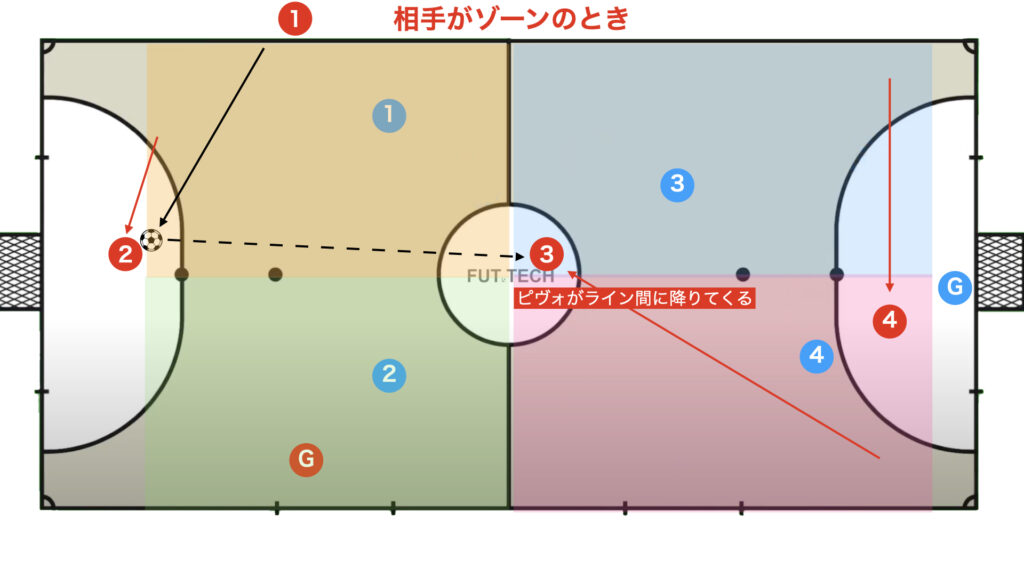
When the opponent defends in a zone, utilize the space between the lines to confuse their defenders.
- Red number 2 provides width up to the front of the goal
- One of the Pivos drops into the space between the lines (as determined by the team)
- Secure the space on the side where the Goleiro is absent
Overrunning the Ball Holder from Both Sides to Create Numerical Superiority
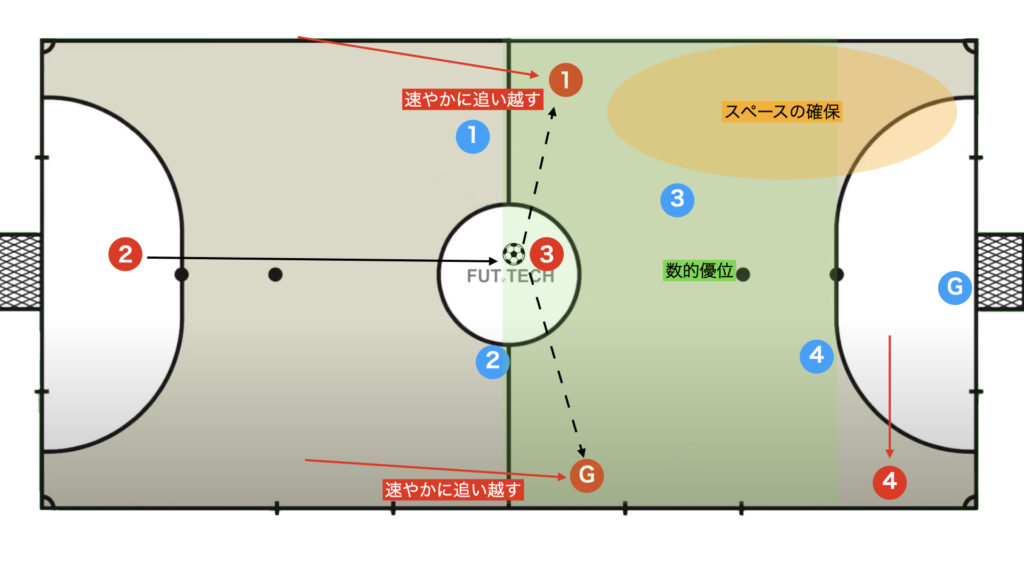
Once the ball enters between the lines, the players on both sides should quickly take up higher positions, create numerical superiority in the opponent’s half, and finish decisively.
Conclusion
How did you find it?
Although involving the Goleiro as the fifth FP in attack is often met with hesitation, if the team consistently practices with a shared understanding, it can be effectively utilized in matches.
It is particularly effective as a means to create numerical superiority when facing stronger opponents.
In some cases, opponents may retreat into their own half to defend against this attack, so simply having this option allows for easier penetration into the opponent’s half.
Thank you very much for reading this article to the end.
If you found this article useful, please consider sharing it using the social media share buttons above.
We regularly share valuable insights on futsal tactics on Twitter, so if you haven’t followed us yet, we’d appreciate your support!
We are committed to raising the level of futsal in Japan by sharing high-quality information through discussions with individuals who have coaching experience in the F.League and overseas.
If you have any questions or notice any mistakes, feel free to leave a comment below.
We update our articles regularly, so if you’d like to keep reading, please bookmark our site or search for “FutTech”!
